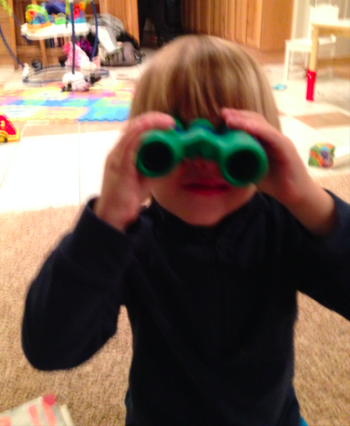The Root
May 03, 2015
[caption id="attachment_2811" align="alignnone" width="350"] What do yo see? [/caption]
What do yo see? [/caption]
As people, we are often quick to look at things and make snap decisions. We judge things by what we see, what we know, and how we think. Truly, we make decisions and judgments through our "lens" of how we "see" or interpret the world around us. As a result, we often address symptoms, what we see, instead of root causes.
For example, have you ever looked at an overweight person and made a decision in your head about how much they eat? What if their weight were a symptom of a deeper root issue, like spouse abuse or anxiety? What if their weight had more to do with how they breathe and cope with life's issues and less to do with what they actually put in their mouths?
Or, have you ever seen anyone with really bad posture? You know, their head enters a room two seconds before the rest of their body does. Maybe they look like a walking question mark. It could be easy to look at them and tell yourself all kinds of stories about their lifestyle habits. "I'll bet they sit all day." , "That guy has never picked up a ball in his life. He needs to get hisself to a gym." What if that guy with really bad posture walks around with his tongue on the bottom of his mouth, and that is what he has done for over twenty years? What if his posture has more to do with where he keeps his tongue than it does with how much time he spends playing the Atari?
Maybe his parents were germaphobes so they never let him have tummy time on the floor when he was an infant. Whatever the reason for his posture, chances are you may be telling yourself the wrong story about his posture.
The point is, we often make decisions and tell ourselves stories based off what we see through our eyes and through our mental lens. But what we can't see, and what we can't know - initially, is there may be a deeper root to the issue. Our superficial lens may only be able to see the symptoms of a root that has buried itself pretty deeply. Or, maybe we are seeing the results of roots that have not been buried deep enough. There can be good roots that just aren't embedded deep enough and the symptoms of their lack of depth are what manifest.
For example, if we see someone who can't touch their toes, we can instantly think they have tight hamstrings, or they lack mobility. But what if what they really lack is reflexive strength, the foundation, or the root, of their ability to move and express movement.
When it comes to your original strength - reflexive strength - you want deep roots. Having a firmly embedded foundation of reflexive strength allows one to move and express strength. It allows them to express mobility, stability, fluidity, coordination, and power. Having deep roots of original strength matters. How we breathe matters. Where we keep our tongue matters. Spending time on the ground as a child AND as an adult matters. Consistently moving like a child, or pressing reset as an adult, is what embeds the roots of our original strength. If someone looks "tight" or you think they lack flexibility, the simply may need to tend to their roots so they gain depth. Stretching for them may only address a symptom while their roots continue to lack depth.
Our roots, our original strength, effect more than we may be aware of. There is more to the human body than what we see. There are deeper layers and real histories behind what we can see, so we shouldn't be too quick to tell ourselves the stories we interpret from what we do see. There may be roots of issues, a lack of foundational roots, or even outside events we just don't know about.
If this post seems convoluted, it is. Our movement is tied to our emotions and thoughts, and our emotions and thoughts are tied to our movements. We may not move well because we lack our original strength. This could negatively effect our emotions, demeanor, temper, confidence, or whatever. On the other side of that coin, we may not move well because we have reacted negatively to something that has happened to us. Maybe we are ticked off at the world and our sour mood has caused shallow breathing, neck tension, and tight hamstrings. The point is, everyone has a story and every story is intertwined in layers. What you think you see in others, you may not really see.
For our own bodies, one of the best things we can do is insure that the roots of our movement, our original strength, are deeply embedded and immovable. This is the best insurance for expressing our full physical potential. For other peoples
bodies, remember there is more going on than what the eyes can see. We should all be quick to listen and slow to speak.
Comments (0)
Please login to comment.